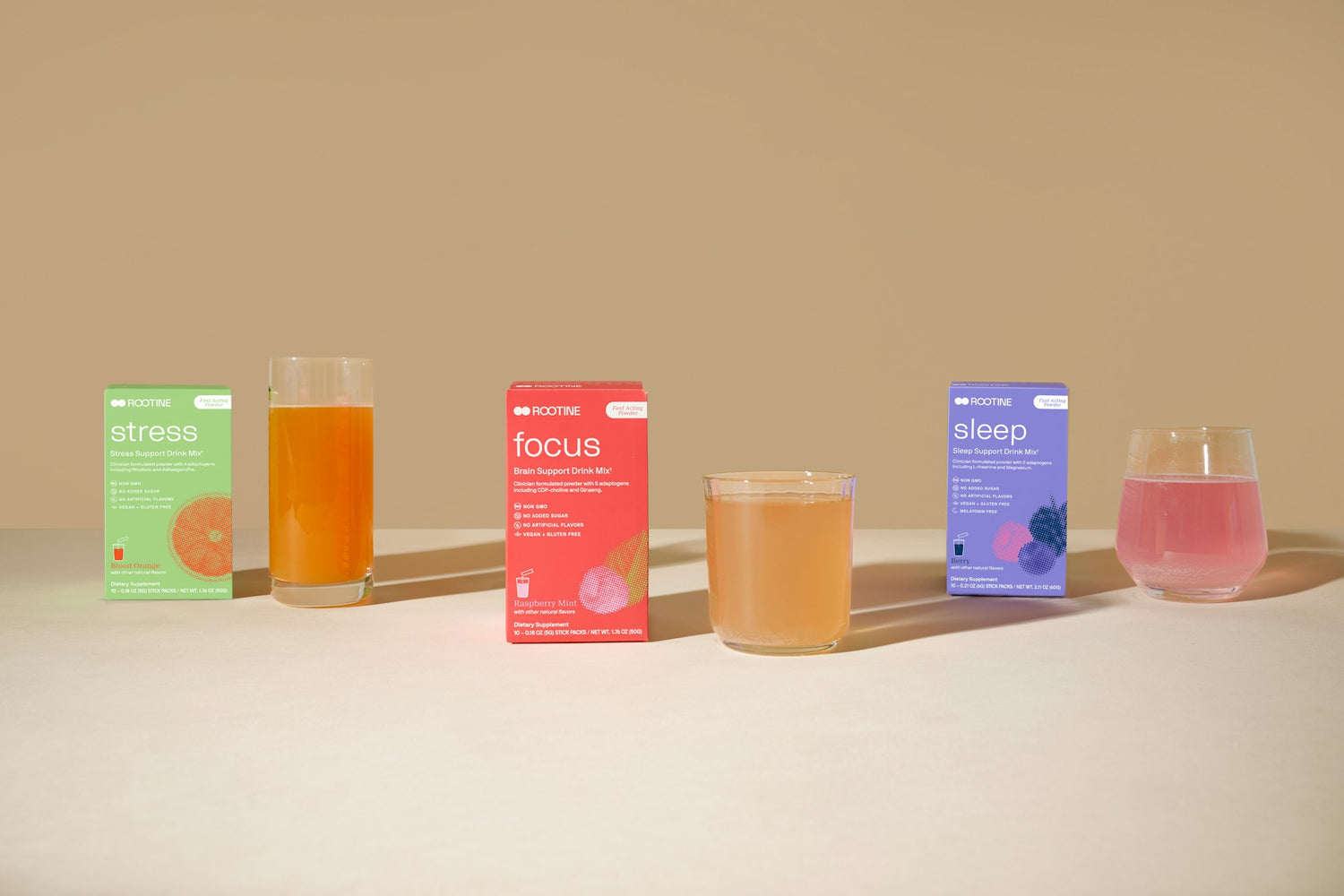Vitamin B6, also known as Pyridoxine, is an often overlooked but critically important nutrient that supports a wide range of life-essential functions in the body. This includes energy metabolism (the process of generating energy from food, nutrients or sunlight), normal nerve function, normal blood cell production, immune system maintenance, and a host of other vital processes [1].
In addition, research has shown Vitamin B6 has health benefits and helps in a number of other areas, such as reducing nausea during morning sickness, reducing PMS symptoms and even keeping the brain functioning normally [2].
The good news is that Vitamin B6 is available in a variety of foods, including fish, poultry, potatoes and non-citrus fruits [3]. The not-so-good news is that people in the US may experience Vitamin B6 deficiency due to certain factors that impede absorption.
CDC’s Second Nutrition Report reported that an estimated 10.5% of the population is B6 deficient - that’s more than Iron, Vitamin D, Vitamin C and Folic Acid! [4]
Certain genetic and kidney diseases can lead to deficiency. Vitamin B6 deficiency is often part of a deficiency of other B vitamins, like Vitamin B9 (Folic Acid, or Folate), and Vitamin B12.
Unlike Vitamin B2, B6 has a cap on maximum daily recommended dosage. The danger, however, is mostly around deficiency, with symptoms like anemia, depression, confusion and a weak immune system [5].
You need to make sure that Vitamin B6 is part of your diet. Even then, certain lifestyle conditions and genetic factors may require additional B6 through vitamin b6 supplements. We’ll dive into this further in the sections below.
But first, let’s get an overview of the benefits of Vitamin B6.

What are some Vitamin B6 benefits?
The B vitamins - B6, B9 and B12 - have been tied to keeping homocysteine levels normal (high homocysteine levels have been linked to heart disease). While it might be easy to draw the conclusion that B vitamins reduce the risk of heart disease, there’s been much debate in this area [6].
One meta-study (a study of many other studies) found that patients’ levels of the above three B vitamins were positively correlated with normal brain function (higher levels of B vitamins meant patients were more likely to be at normal levels), while higher homocysteine levels were negatively correlated with normal brain function [7].
There are also a number of studies that have shown positive effects of B6 supplements on mitigating morning sickness and premenstrual syndrome symptoms. The American Congress of Obstetrics and Gynecology even recommends 10-25mg of B6 three to four times a day to treat nausea and vomiting during pregnancy [8, 9].
At Rootine, we view these overarching studies as useful pointers, but ultimately, they are just too general to apply to you specifically. You are unique, and your genetic makeup and lifestyle habits are different from anybody else’s.
How much Vitamin B6 do you need?
While it’s easy to fall back on general recommendations for Vitamin B6 dosages, your body and lifestyle are unique to you and you alone. How much B6 someone needs varies from person to person - so it’s important to take recommendations with a grain of salt.
For reference, the Food and Nutrition Board recommends the following [10]: 1.3mg daily for men and women, 1.9mg for women who are pregnant, and 2mg for those that are lactating.
A varied diet (see What foods have Vitamin B6? below) usually has enough B6 to reach these levels, but it’s important to note that certain diseases, genetic conditions and lifestyle factors may require you to take different doses of Vitamin B6.
At Rootine, we provide an at-home DNA test when you first sign up for your personalized vitamin packets. Along with blood work and a lifestyle assessment, this test helps us gather important genetic information that clues us into how much daily Vitamin B6 you actually need.
What happens if you’re deficient in Vitamin B6?
Given that Vitamin B6 is so important for so many vital processes, lacking B6 impacts many of your body’s functions.
People who are deficient experience anemia, cheilosis (cracks on the corners of your mouth and scaling on your lips), depression (tied to the fact that Vitamin B6 helps your body make serotonin), a weaker immune system, and other unpleasant symptoms [11].
But what happens if you overdose on Vitamin B6?
What if you take too much Vitamin B6?
Like the other B vitamins, B6 is water soluble - while the body can absorb large amounts of the nutrient, it can quickly eliminate most of it when you head to the bathroom [12].
But unlike Vitamin B2, B6 does have upper intake levels according to several international government reports [13, 14]. Doses of 1-6g per day for over a year have caused nerve damage, manifesting in loss of control over movement [15].
Taking too much Vitamin B6 can also have the following side effects: disfiguring skin lesions, heartburn, nausea and numbness [16].
It goes without saying, avoid taking an absurdly large amount of Vitamin B6!

Sources of Vitamin B6
Meat, fruit and vegetables are all food sources of Vitamin B6 [17], so everyone from the most voracious meat eater to the strictest vegan can get an adequate source of B6 from their diet - granted there aren’t any quirks in their genetic makeup.
A few examples of foods containing Vitamin B6:
1) One cup of canned chickpeas has 1.1mg of Vitamin B6.
2) Three ounces of cooked tuna has 0.9mg.
3) One roasted chicken breast (three ounces) has 0.5mg.
4) One cup of boiled potatoes has 0.4mg.
5) One banana also has 0.4mg of B6.
Get personalized vitamins delivered to your door
Our personalized nutrient packets include Vitamin B6 and up to 17 other vital vitamins and minerals - all dosed according to DNA results and a lifestyle assessment to make sure you have optimal levels. If you read about standard recommendations in mg of vitamin b6, you should consider a personalized option that tailors formulas to your body instead of the one-size-fits-all solutions of most dietary supplements. To see what's included in your monthly subscription of Rootine vitamins and minerals, see the link below.
These statements have not been evaluated by the Food and Drug Administration. This product is not intended to diagnose, treat, cure or prevent any disease. Always consult with your healthcare provider before starting any supplement program.
1. Parra, Marcelina et al. “Vitamin B₆ and Its Role in Cell Metabolism and Physiology” Cells vol. 7,7 84. 22 Jul. 2018.
2. “Vitamin B-6.” Mayo Clinic, Mayo Foundation for Medical Education and Research, 17 Oct. 2017.
4. CDC’s Second Nutrition Report. 2012. Centers for Disease Control and Prevention.
5. “Office of Dietary Supplements - Vitamin B6.” NIH Office of Dietary Supplements, U.S. Department of Health and Human Services.
6. Zhang, Chi et al. “Association between B vitamins supplementation and risk of cardiovascular outcomes: a cumulative meta-analysis of randomized controlled trials” PloS one vol. 9,9 e107060. 19 Sep. 2014.
7. Kennedy, David O. “B Vitamins and the Brain: Mechanisms, Dose and Efficacy--A Review” Nutrients vol. 8,2 68. 28 Jan. 2016.
8. Sahakian V, Rouse D, Sipes S, Rose N, Niebyl J. Vitamin B6 is effective therapy for nausea and vomiting of pregnancy: a randomized, double-blind placebo-controlled study. Obstet Gynecol 1991;78:33-6.
9. Ruangsri, Rung-aroon. Pyridoxine for nausea and vomiting of pregnancy: A randomized, double-blind, placebo-controlled trial. American Journal of Obstetrics & Gynecology, 173, 881-884.
10. Institute of Medicine. Food and Nutrition Board. Dietary Reference Intakes: Thiamin, Riboflavin, Niacin, Vitamin B6, Folate, Vitamin B12, Pantothenic Acid, Biotin, and Choline. Washington, DC: National Academy Press; 1998.
12. Simpson JL, Bailey LB, Pietrzik K, Shane B, Holzgreve W. Micronutrients and women of reproductive potential: required dietary intake and consequences of dietary deficiency or excess. Part I–Folate, Vitamin B12, Vitamin B6. J Matern Fetal Neonatal Med 2010;23:1323-43.
14. EFSA Panel on Dietetic Products, Nutrition and Allergies (NDA). Dietary Reference Values for vitamin B6. EFSA Journal, volume 14, issue 6.



